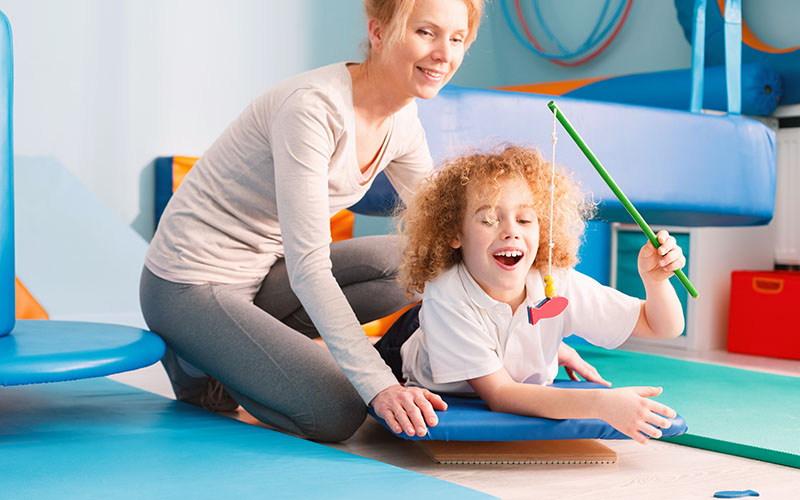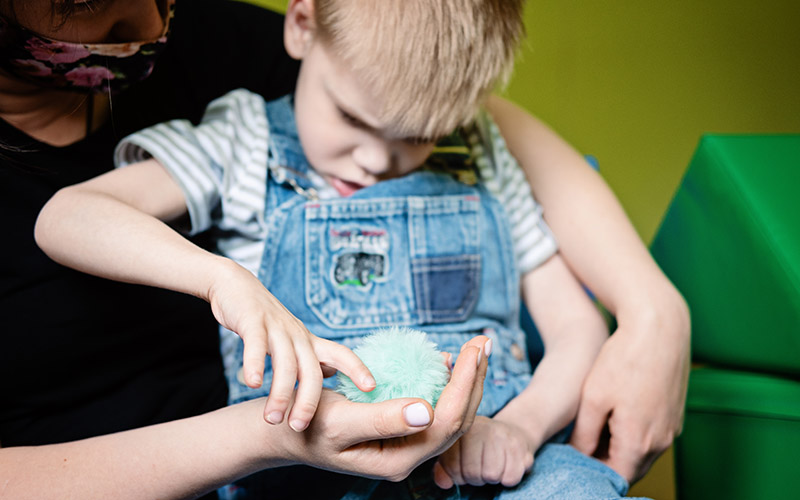For children with autism, having a safe and supportive play area is essential for their overall well-being and development. Sensory sensitivities, unique interests, and varying levels of social interaction can make traditional play spaces challenging for autistic children. In this article, we’ll explore how to design a safe and enriching play area that caters to the specific needs of children on the autism spectrum.
- Understanding Sensory Needs: Sensory sensitivities are common among autistic children, and the play area should cater to their sensory preferences. Consider factors such as lighting, noise levels, and textures. Use soft, non-abrasive materials for surfaces, and provide a mix of sensory-rich elements, like textured walls or tactile objects, to create a stimulating yet comfortable environment.
- Visual Appeal and Organization: Autistic children often respond well to visual stimuli. Use clear, simple visual cues to help them navigate the play area. Incorporate visual schedules or charts to outline daily activities, fostering predictability and reducing anxiety. Organize the space into defined zones for different activities, making it easier for the child to understand and engage.
- Calming Spaces: Designate a quiet, calming space within the play area. This retreat allows the child to self-regulate when feeling overwhelmed. Consider including items like soft cushions, weighted blankets, or noise-canceling headphones to create a serene environment for relaxation.
- Incorporate Special Interests: Many autistic children have intense interests in specific topics. Incorporate elements related to their special interests into the play area. Whether it’s a themed corner, books, or toys that align with their passion, this not only engages the child but also provides comfort and familiarity.
- Safe and Secure Design: Ensure the play area is physically safe and secure. Install soft padding on floors to cushion falls, secure furniture to prevent tipping, and use child-proofing measures where needed. A secure environment fosters confidence, allowing the child to explore and play without unnecessary risks.
- Accessible Play Equipment: Choose play equipment that accommodates various abilities and sensory preferences. Swings, climbing structures, and sensory-friendly toys can be modified or selected to meet the child’s needs. Ensure that the equipment is sturdy, well-maintained, and age-appropriate.
- Encourage Social Interaction: Foster social interactions by including spaces for both solitary and group play. Provide opportunities for parallel play, where children can engage in activities side by side, gradually building their social skills. Consider incorporating activities that encourage joint play, promoting positive social experiences.
- Flexible Layout: Design the play area with flexibility in mind. Allow for rearrangement of furniture and play elements to accommodate changing preferences or needs. A dynamic environment provides variety and adapts to the child’s evolving interests and developmental stages.
- Promote Independence: Include features that encourage independence. Low shelves with labeled bins for toy storage, accessible sinks for handwashing, and easy-to-use doors and gates empower the child to navigate the play area with minimal assistance.
- Regular Maintenance and Evaluation: Regularly assess and maintain the play area to ensure its safety and functionality. Be attentive to any wear and tear, potential hazards, or changes in the child’s needs. Keeping the space well-maintained contributes to its effectiveness as a supportive environment.
Conclusion:
Creating a safe and engaging play area for an autistic child involves thoughtful consideration of their unique needs and preferences. By incorporating sensory-friendly elements, accommodating special interests, and providing a secure and adaptable environment, caregivers can establish a haven where children with autism can explore, learn, and play with confidence. A well-designed play area not only supports their developmental journey but also fosters joy and a sense of belonging in their own unique way.




